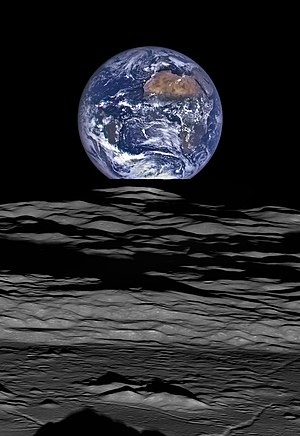Earth is the third planet from the Sun and the only astronomical object known to harbor life. It is the densest planet in the Solar System and the largest and most massive of the four rocky planets. About 29% of Earth's surface is land, with the remaining 71% covered with water and much of Earth's polar regions covered in ice. Earth's interior is active with a solid iron inner core, a liquid outer core that generates Earth's magnetic field, and a convective mantle that drives plate tectonics. Earth formed over 4.5 billion years ago. Within the first billion years of Earth's history, life appeared in the oceans and began to affect Earth's atmosphere and surface. Since then, the combination of Earth's distance from the Sun, physical properties and geological history have allowed life to evolve and thrive, including more than 8 billion humans. Earth is orbited by one permanent natural satellite, the Moon, which orbits Earth at 384,400 km (1.28 light seconds) and is roughly a quarter as wide as Earth. This view of Earth was taken by NASA's Lunar Reconnaissance Orbiter in 2015, from above the Compton crater on the Moon.Photograph credit: NASA
